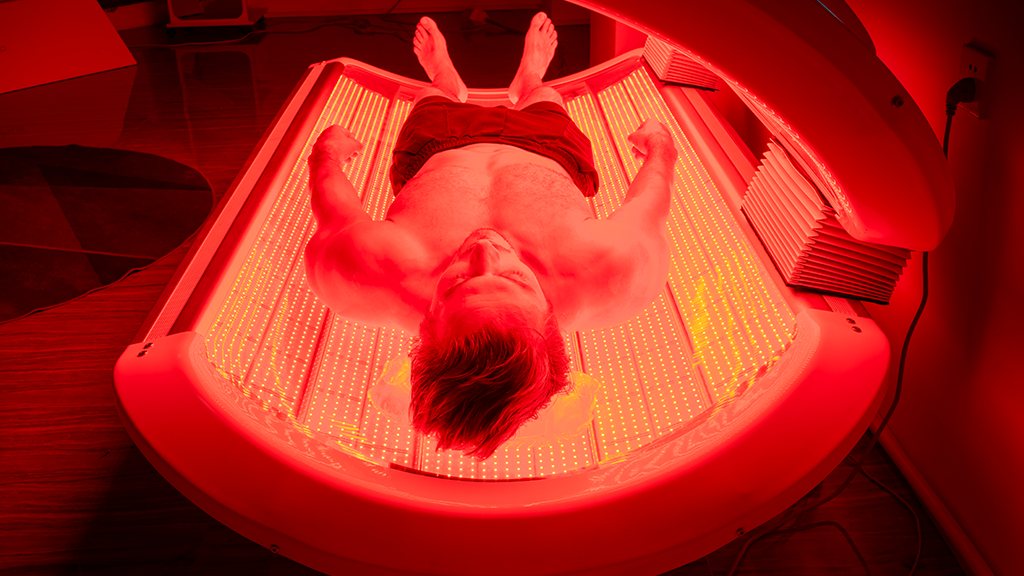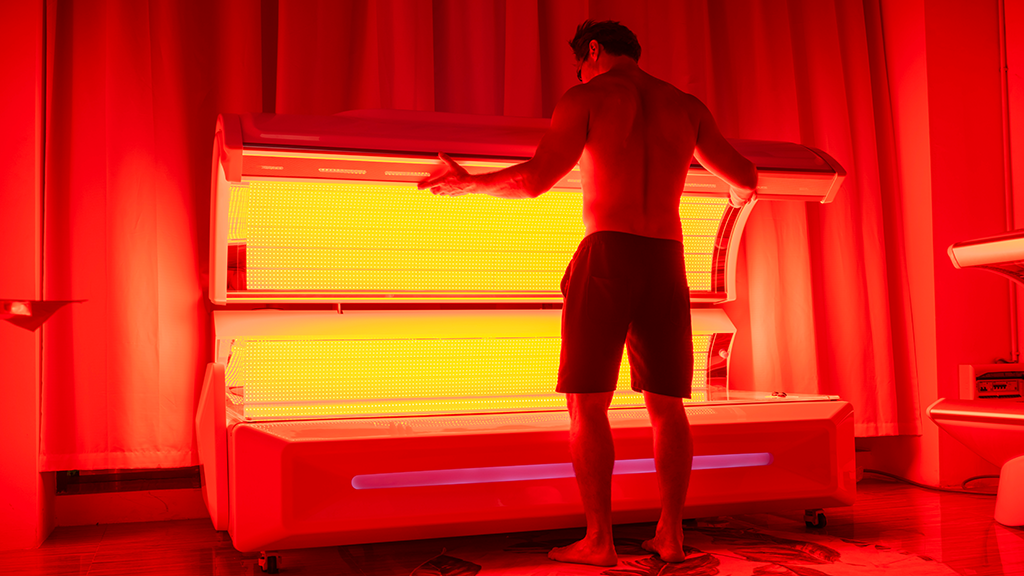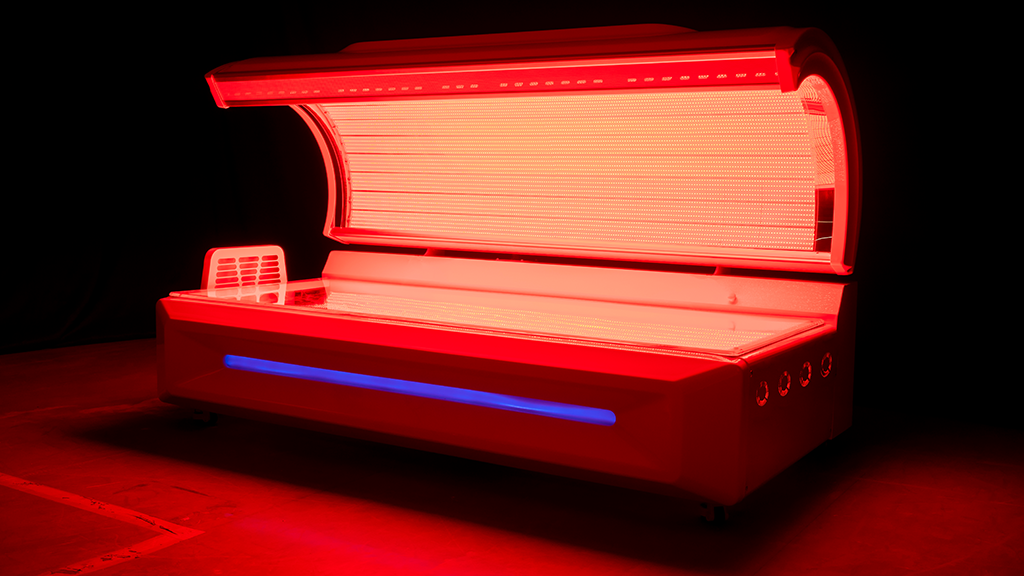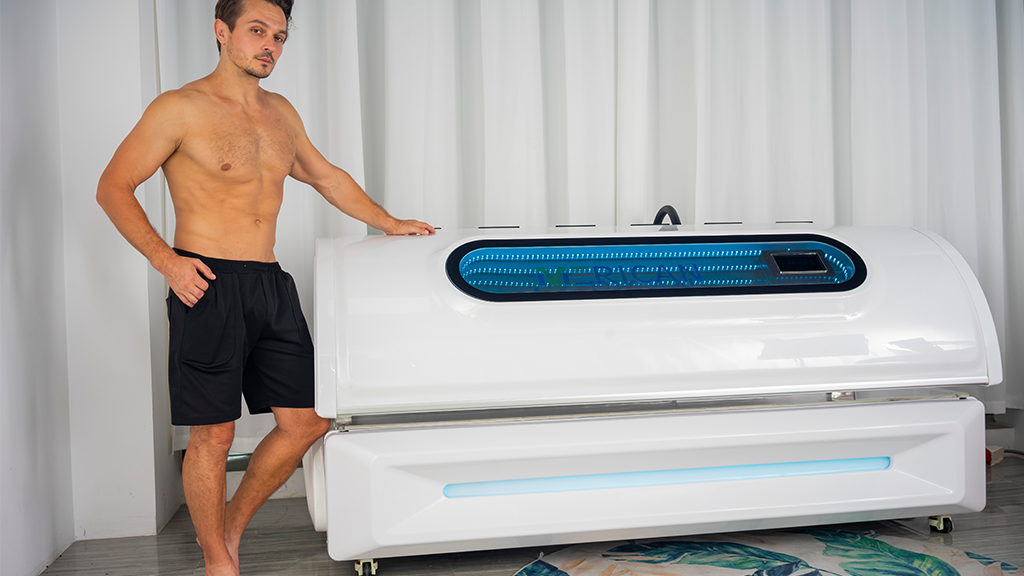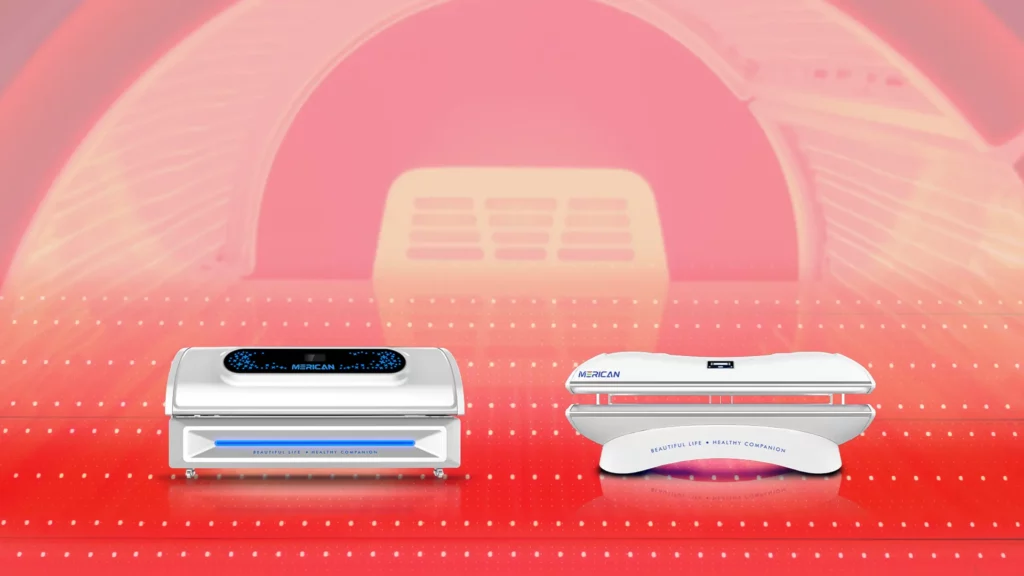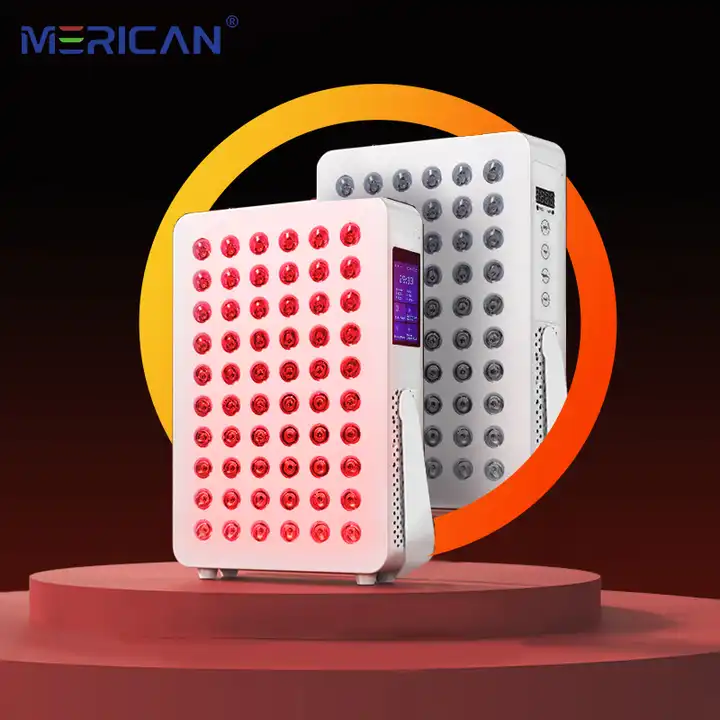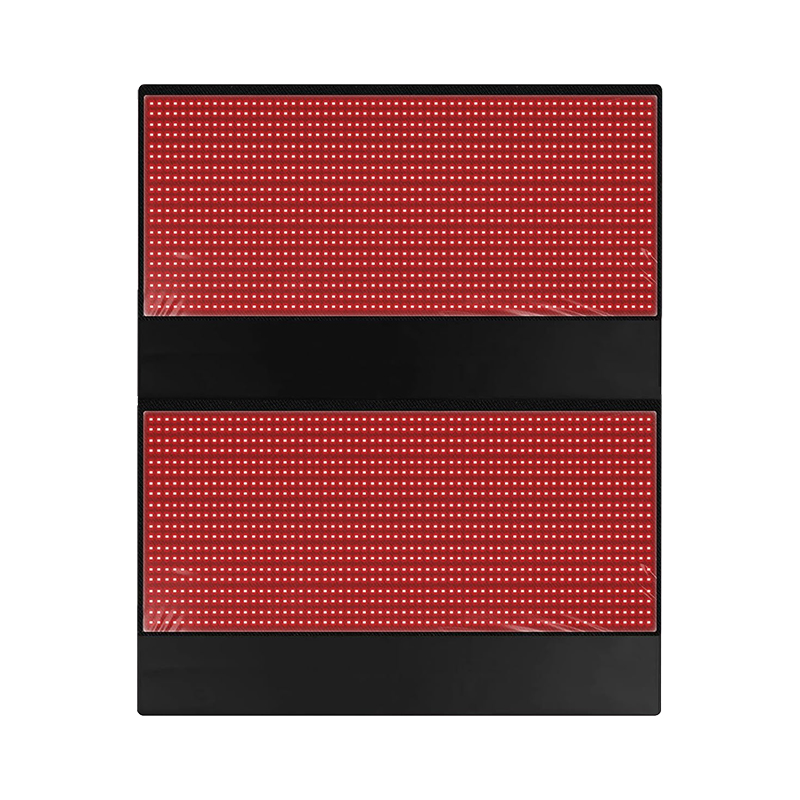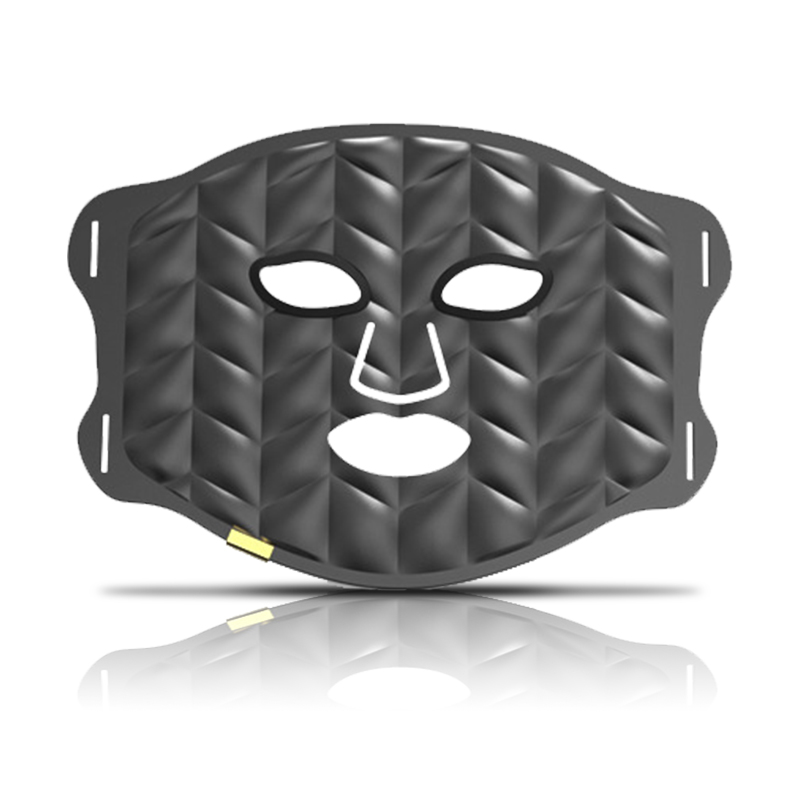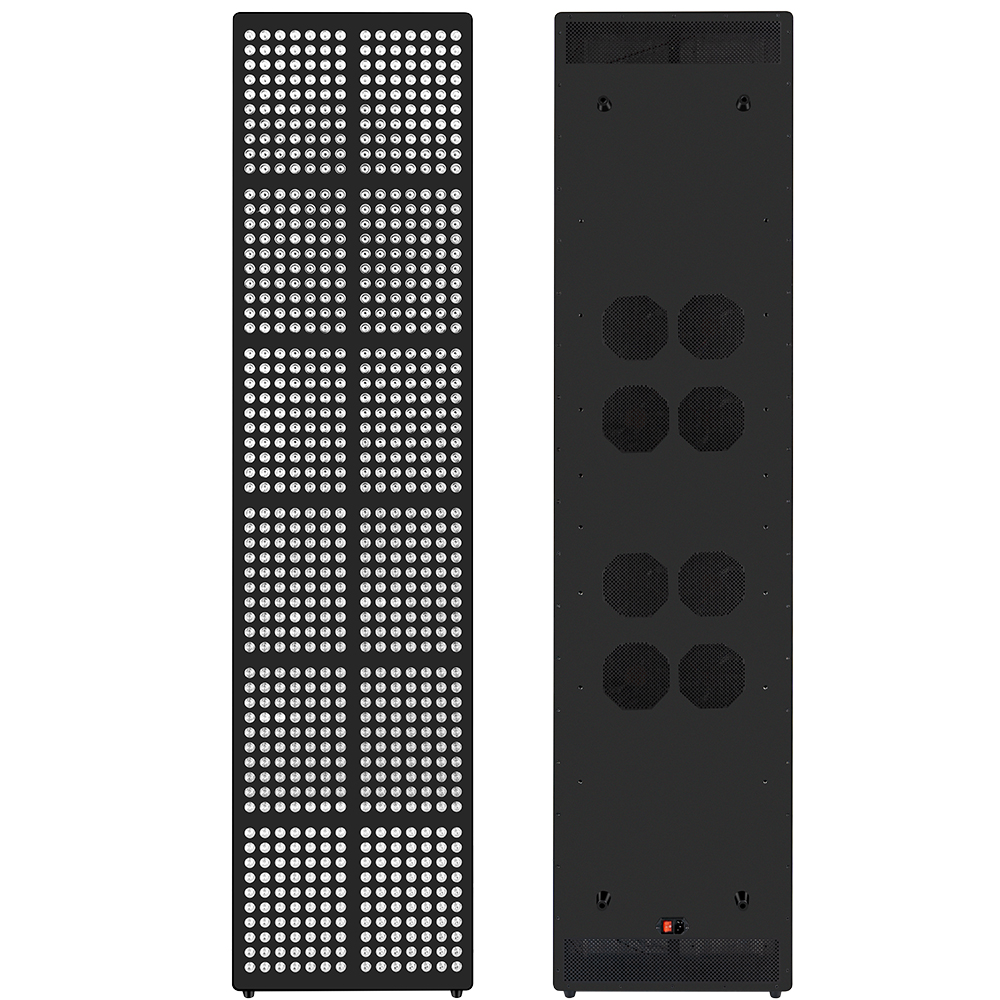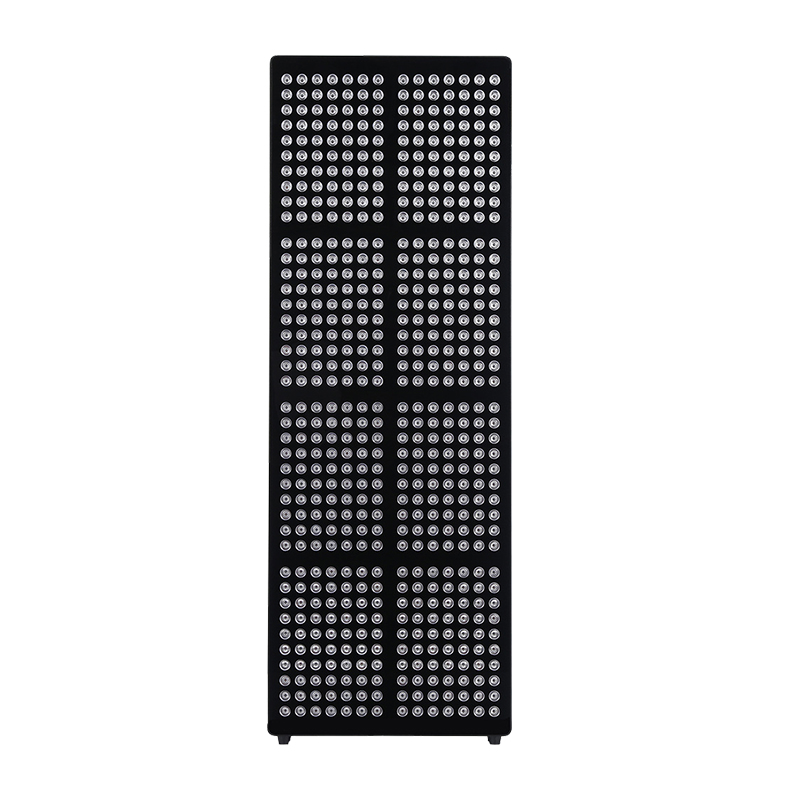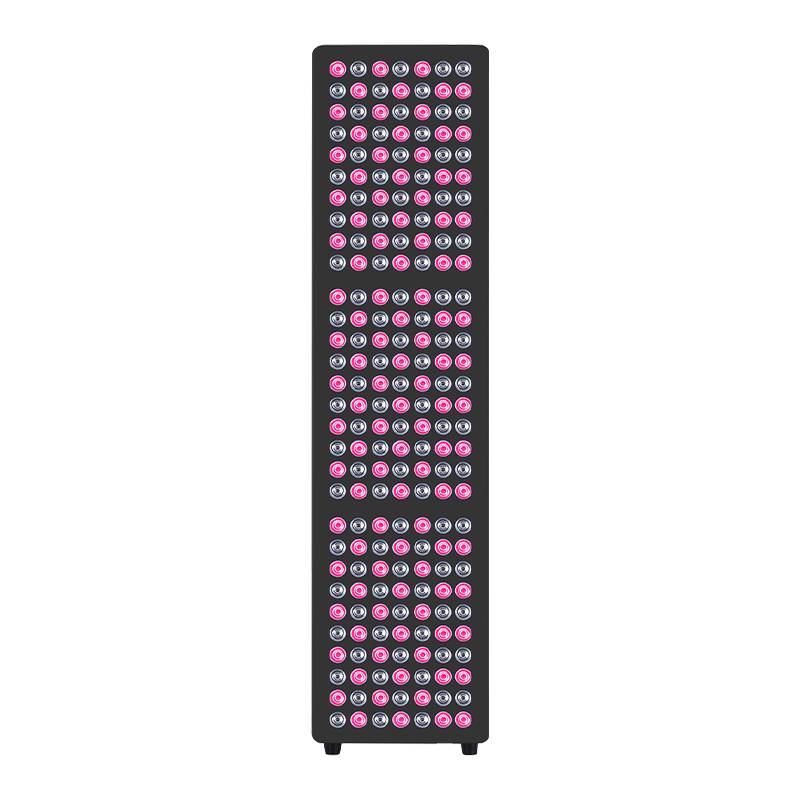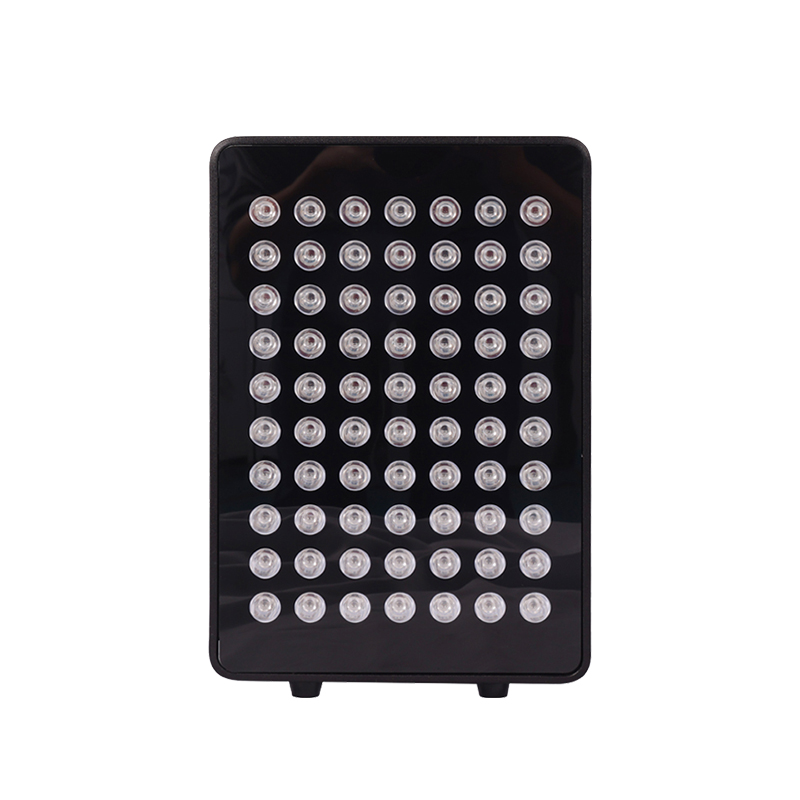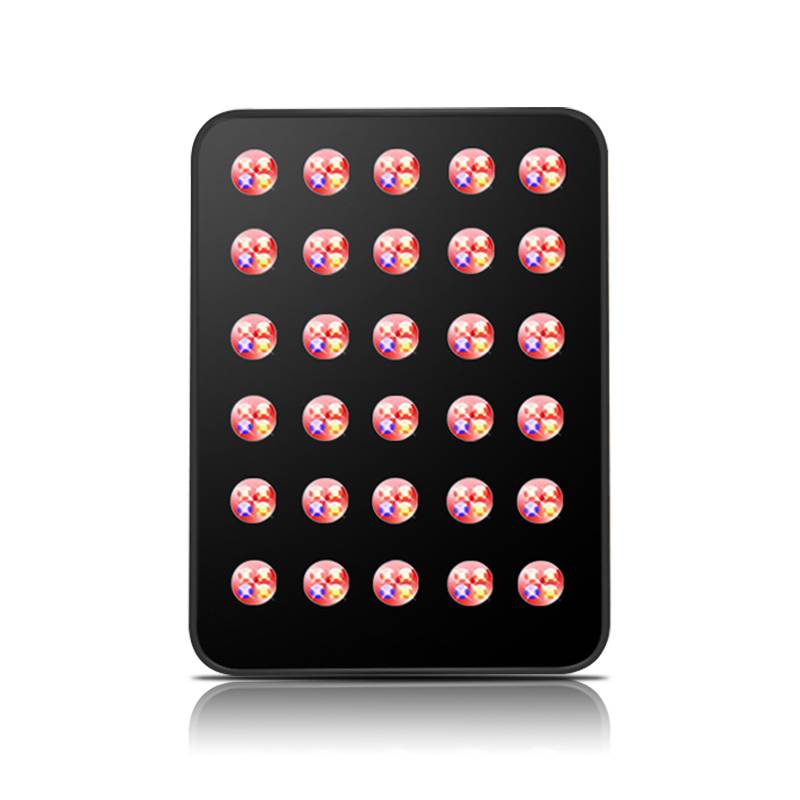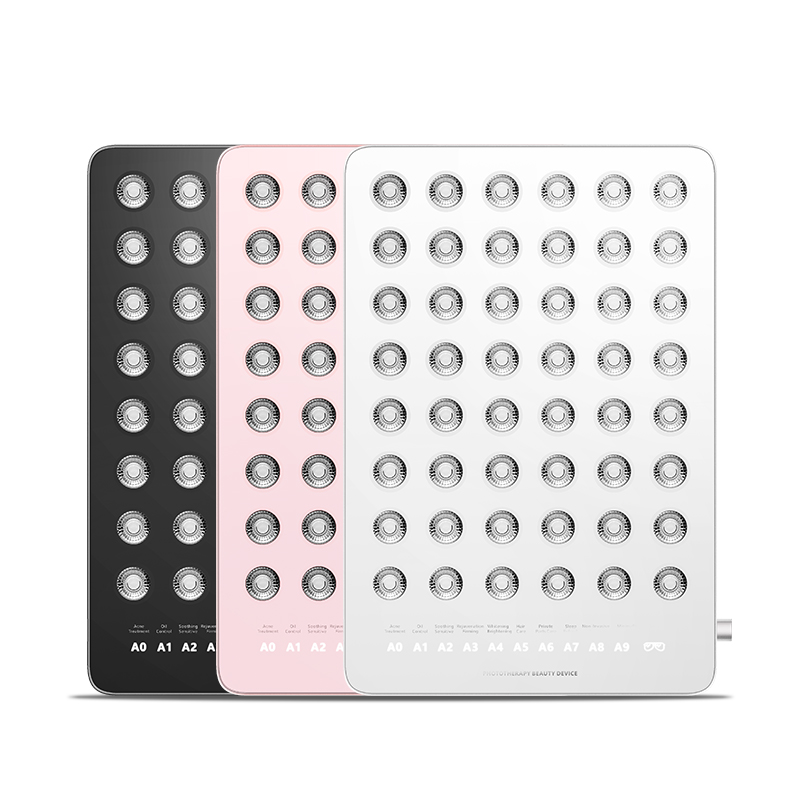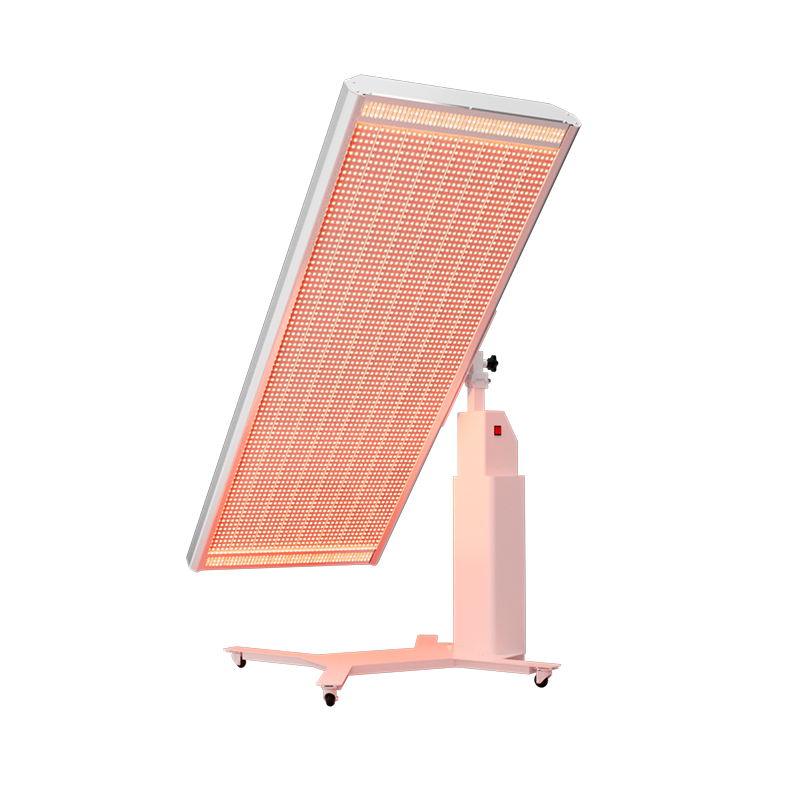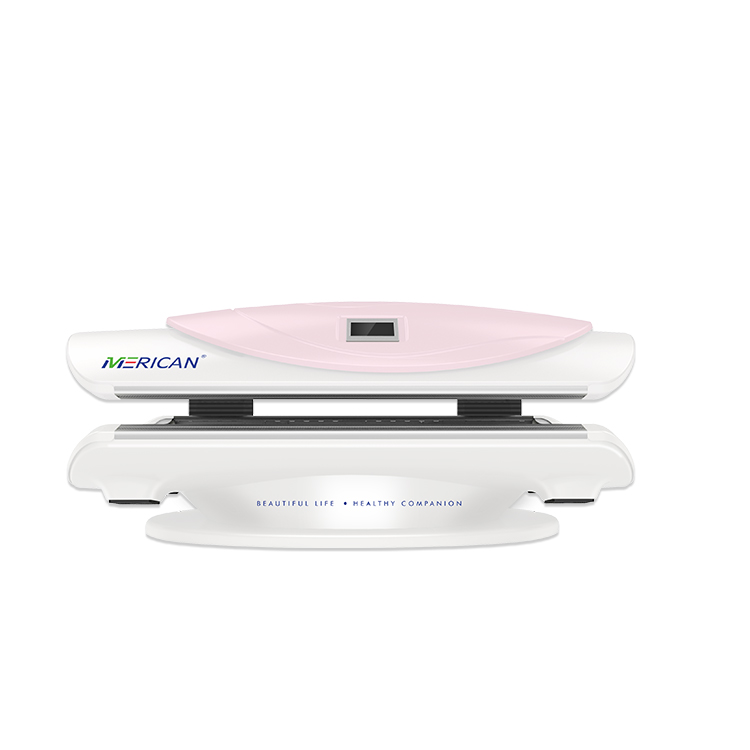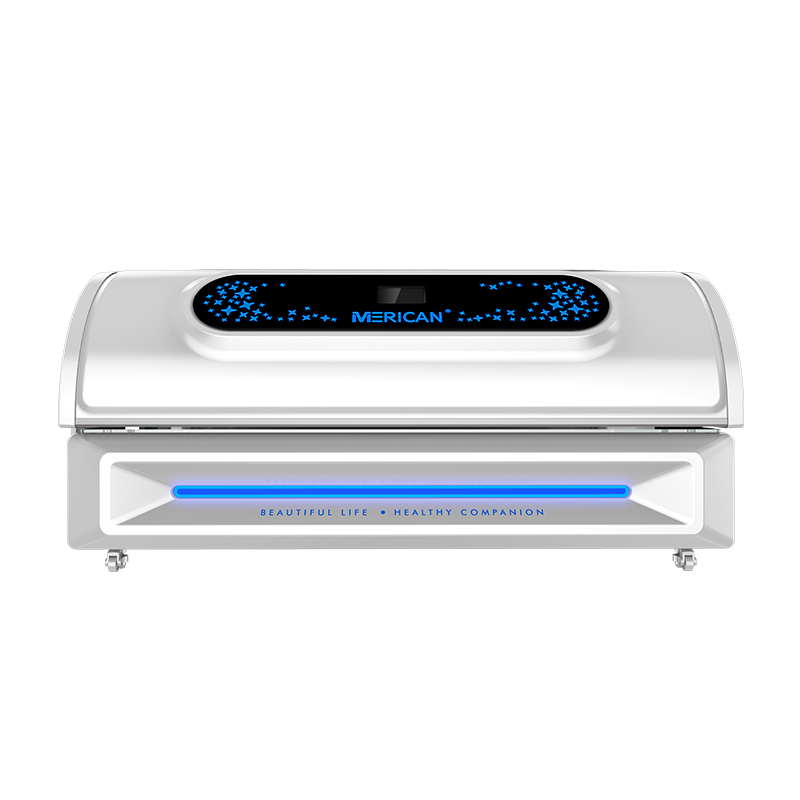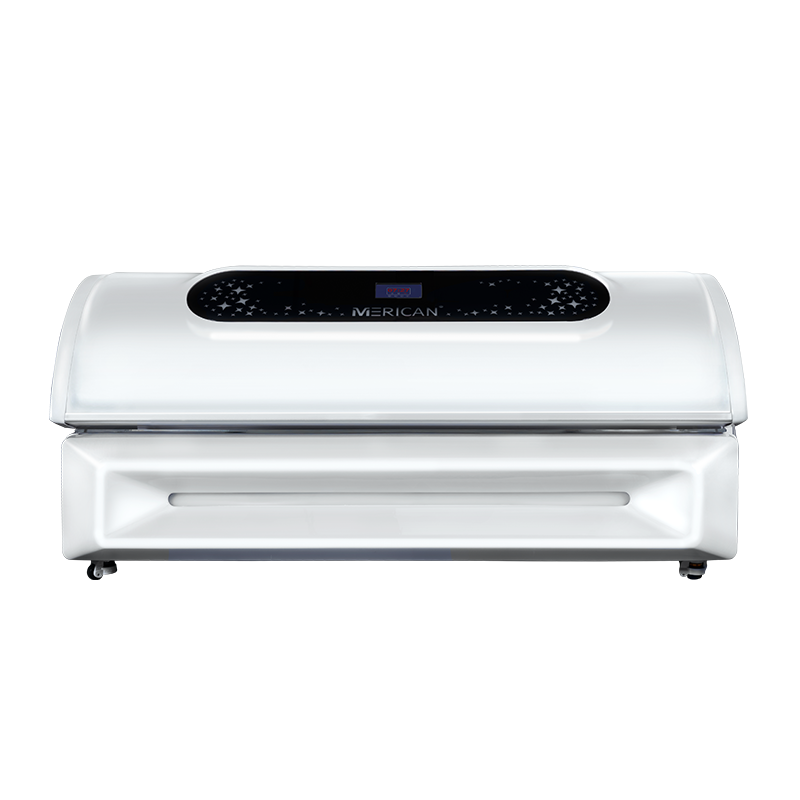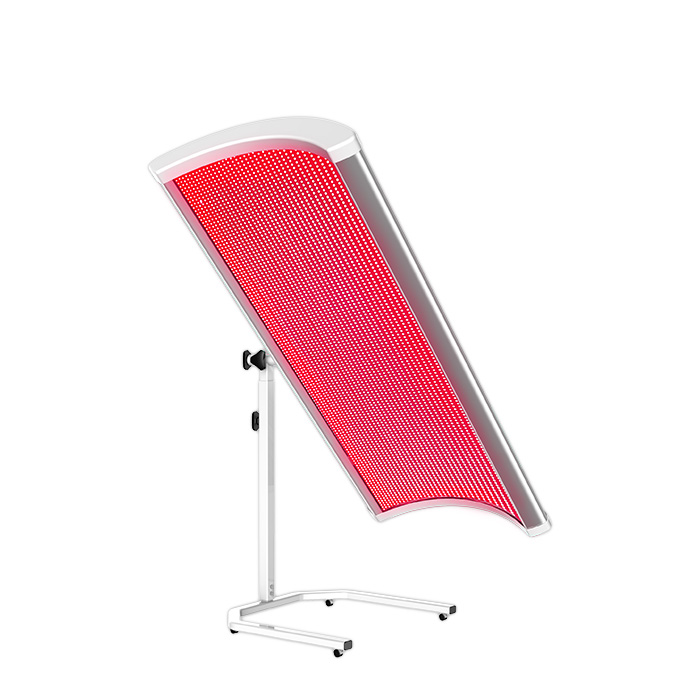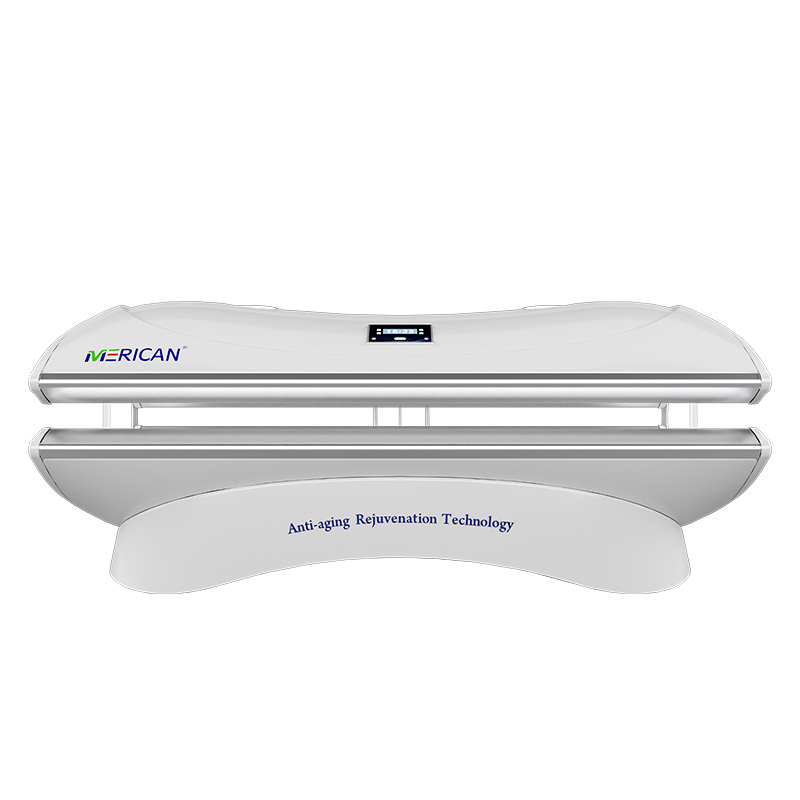Let there be light — for your pain, skin, and injuries, that is. The possibilities of red light to treat a variety of health and aesthetic concerns are just emerging thanks to interest from researchers, universities, and hospitals, as well as at-home devices that make it more accessible.
Red light therapy (RLT) is a type of photomedicine, which is “the use of light to treat skin and other health conditions,” says Jared Jagdeo, MD, the founding director of the Center for Photomedicine at SUNY Downstate Health Sciences University in Brooklyn, New York.
Here, learn about the history of the therapy, how it works, its potential benefits, what to expect from treatment, and more.
History of Red Light Therapy
There’s another term for light therapy, and that is photobiomodulation (or PBM for short), says Praveen Arany, PhD, DDS, an associate professor at the University of Buffalo and the interim director of the Center of Excellence for Photobiomodulation at Shepherd University in Shepherdstown, West Virginia. Other terms for the same thing are low-level laser treatment (LLLT), photostimulation, and cold laser treatment, he says.
Light therapy has been around for more than 50 years. It was discovered by the Hungarian physician Endre Mester in the 1960s when scientific experiments with red lasers on rats led to hair growth and wound healing, according to a research article published in December 2017 in the Journal of Biophotonics. Over the years, light therapy was largely considered bogus. But with new research (some conflicting), the scientific community has started to take notice.
“Right now in the United States, red light therapy is still considered non-mainstream science. But there are growing academic and clinical centers adopting the technology and making it available to patients,” Dr. Arany says.
There are now centers, like the one at Shepherd University, dedicated to educating healthcare professionals and scientists about the legitimacy of PBM as a clinical treatment, as well as professional organizations, such as the North American Association for Photobiomodulation Therapy (NAALT) and the PBM Foundation. One of the more popular uses of red light therapy is in skin care, and the availability of affordable at-home devices has boosted its popularity.
How Red Light Therapy Works
Photobiomodulation utilizes light within specific wavelengths. This is between 400 nanometers (nm) (blue) up to 1,200 nm (near-infrared), says Arany. Red light has wavelengths between 620 to 750 nm, according to the National Center for Atmospheric Research. This is visible light.
Blue, green, and red light have all been effectively used for PBM treatment, he says. Near-infrared light, which is a longer wavelength light (up to 1,200 nm), is also used in PBM and is available in infrared saunas. While this light may appear red, in reality, infrared light is not visible and instead heats the body from within to drive physiological changes.
Red light therapy, in particular, has grown in popularity in recent years and is perhaps the best-known and easiest to access. “Red light devices are easier to manufacture and are widely available,” Arany says.
So how does it work? When photons (particles of light) are placed near the skin they enter tissues and activate chromophores (a part of a molecule that gives it its color), which triggers changes in cells, according to the American Society for Laser Medicine & Surgery. In addition, red light therapy also affects the mitochondria (the powerhouse of cells), generating ATP (energy) to promote healing, notes the PBM Foundation.
For red light therapy to work, specific protocols and dosages have to be used, depending on your health issue, which is why a knowledgeable practitioner is so important, says Arany. If possible, seek out this treatment from a hospital, university, or clinical setting. He recommends against red light therapy from salons or spas.
Red light devices can be purchased and used at home for skincare, and these are typically safe to use as directed, says Dr. Jagdeo.
Red light therapy devices feature LED red lights used as handheld devices, LED panels, or full-body beds, depending on the reason for treatment. Some devices use both red and near-infrared lights, but in general, there aren’t different types of red light therapy.
Types of Red Light Therapy
Red light therapy devices feature LED red lights used as handheld devices, LED panels, or full-body beds, depending on the reason for treatment. Some devices use both red and near-infrared lights, but in general, there aren’t different types of red light therapy.
Possible Benefits of Red Light Therapy
While research is promising on red light therapy, there are still conflicting studies — and some show no benefit for certain health conditions. In general, studies need more standardization across the board (in dosage and timing) depending on the condition for scientists and practitioners to fully understand red light therapy’s range of benefits. Below are potential promising uses for red light therapy, according to experts.
Enhances a Youthful Look in Skin
One of the more commonly cited benefits of red light therapy is its effects on the skin. It can be used to address:
Acne
Fine lines and wrinkles
Hair growth
Redness
Red light therapy decreases inflammation to address redness, acne, and hair growth, also allowing topical or oral treatments for these conditions to work even better, says Jagdeo. In addition, when it comes to banishing breakouts, “red light therapy increases our immune defenses against the bacteria associated with the formation of acne,” he adds. For lines and wrinkles, these treatments target enzymes associated with the breakdown of collagen and stimulate collagen production, according to the Cleveland Clinic
Assists Sports Injury Rehabilitation
Being sidelined by an injury is extremely tough mentally and physically, but red light therapy may help you get back on your feet. “Red light can be used to improve skeletal muscle performance, reduce pain, and improve recovery from injury,” says Arany. The authors of a review published in December 2021 in the journal Life noted that PBM might be used in both rehab of sports injuries, and to enhance sports performance, though more research is needed.
Helps Heal Wounds
Whether you have an ulcer in your mouth or an open sore on your foot, the anti-inflammatory properties of red light have been shown to improve the body’s ability to heal, says Arany, who published a review in April 2019 in Advances in Skin and Wound Care on the topic. “Research in my lab shows that PBM can activate a potent growth factor that promotes tissue healing and regeneration,” he explains, something that could be especially important for oral wounds, research has shown.
Lessens Pain
Pain is notoriously difficult to treat, but light therapy may be a viable tool to help. “Red light acts on neurons that transmit pain,” says Arany.
Red light may be better for certain types of pain than others, according to one recent review published in July 2022 in the Journal of Pain. The authors noted there is some evidence of the efficacy of red light for pain conditions like fibromyalgia, chronic low blood pressure, osteoarthritis, and neuropathy.
Decreases Side Effects of Cancer Treatment
When used preventively before a chemotherapy or radiation treatment, red light therapy may help decrease side effects, such as pain, and their severity, says Arany, though more human studies are needed to fully understand this benefit.
For example, one study on mice, published in December 2021 in the journal Photonics, found that red light and near-infrared therapy decreased the severity of skin damage in radiation and improved the skin’s ability to heal. This is an animal study, though it does set the stage for more necessary research to be done.
Other past research has also shown that PBM decreased oral tissue swelling and inflammation in people who have head and neck cancers, though more studies are needed.
Red Light Therapy Risks
Red light therapy is cleared by the U.S. Food and Drug Administration (FDA), according to the PBM Foundation. It is considered very safe, says Jagdeo, though there’s certainly an opportunity for user error if you’re utilizing an at-home device. For example, it’s possible to overuse the device or use it more frequently than is recommended by the manufacturer. The fortunate news is that many at-home devices have an automatic timer and shutoff, says Jagdeo, which makes it easier not to overdo it. Always follow the instructions, and be aware that the Journal of Pain review noted a risk of worsening migraine symptoms for some users. It’s also important to check in with the appropriate doctor (for example your dermatologist or PCP) to make them aware that red light therapy is in your treatment plan. Finally, seek treatment from a reputable practitioner. “Light can cause damage, but if the right protocol is used, you don’t see any side effects,” says Jagdeo.
Who May Want to Try (and Avoid) Red Light Therapy
Red light therapy is designed as a supportive treatment. Meaning: It’s unlikely that red light therapy will be the only treatment you use to address a health or skin-care problem. For instance, along with red light, you may also use a topical (such as a retinoid) for acne or fine lines, notes Jagdeo.If you are pregnant, you should avoid red light therapy, says Arany. And if you are treating a specific medical condition, get the okay from your doctor first.
Getting Started With Red Light Therapy
Here’s what you may want to know before you try red light therapy under the guidance of your professional healthcare provider. Usually, red light therapy will be done in a series of sessions over a certain span of time. For instance, says Jagdeo, when it comes to skin concerns, he recommends trying red light therapy three times per week for 10 minutes each time for a minimum of one month. “Some patients will see results in as little as one month, but often these results continue to improve with time,” he says. While many at-home red light therapy devices are available for purchase, it’s always best to talk to a dermatologist or pain specialist before you try red light therapy on your own. A conversation with a qualified healthcare provider will help you not only establish your wellness goals and determine if red light therapy is right for you but also find the specific at-home device that’s worth the cost.
What to Expect Before, During, and After Red Light Therapy
It likely won’t hurt. Red light therapy is non-invasive and is painless for most people. A handheld device may be pressed against the skin at the site of the injury or pain. If you are lying in a full-body bed or pod that uses both red and near-infrared light, you may feel warmth from the near-infrared bulbs. You should not expect to experience side effects from treatment, says Arany. Watch your eyes. Ask the practitioner if it’s necessary to wear eye protection during treatment. You may feel at ease. One of the big perks of red light therapy is how relaxed people say they feel after treatment, says Jagdeo. Consider this time your time and lean into the soothing effects. You may need more than one treatment. Talk to your practitioner ahead of time to understand how many sessions you will need (and how often), so you can fully understand the scope of treatment. This will differ widely depending on the health concern you’re addressing. “In certain scenarios, even a single treatment has been shown to be effective, while the most intense PBM treatment is three times per week for four weeks, minimum, to see a prominent effect,” says Arany. With all this said, keep in mind that the world of phototherapy is evolving, and more research is needed to determine the best uses for the various wavelengths, doses, and devices for specific health conditions. It’s best to consult a dermatologist, pain specialist, or your doctor if you have questions or before you commit to any high-cost treatment. Medical guidance will help you weigh the benefits and risks of red light therapy for your specific health goals.
Red Light Therapy Resources We Love
Best Organizations
PBM FoundationFor information about what PBM is, how it works, and what health conditions it may be used to address, this foundation is an excellent resource. You’ll also be able to watch videos featuring testimonials from patients who talk about how red light therapy has helped them. American Academy of DermatologyThe premier dermatological association educates on a wide range of skincare topics, including on the use of light therapy for various conditions, such as rosacea, acne, and psoriasis, offering an unbiased, science-backed view on where the research stands.
Best Academic Center
Shepherd UniversityShepherd University recently opened a new Center for Excellence in Photobiomodulation to help move scientific understanding and advancements forward on photobiomodulation (which includes red light therapies).
Best Scientific Resources
Photobiomodulation, Photomedicine, and Laser SurgeryWant to stay up-to-date on the scientific literature on phototherapy? Check out the peer-reviewed journal Photobiomodulation, Photomedicine, and Laser Surgery for current and past issues on phototherapy, low-level laser therapy, photobiomodulation, and laser surgery.The National Center for Complementary and Integrative Health NCCIH is an excellent resource for getting a top-line look at where scientific consensus stands behind complementary therapies. You can search by topic or health concern in their database and read about the therapies that are backed (or not backed) by research.

